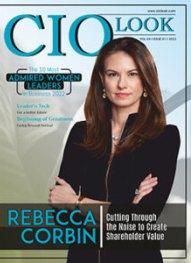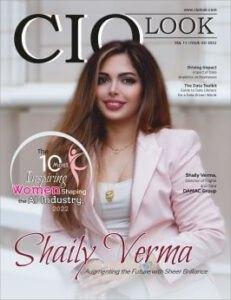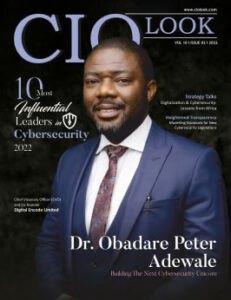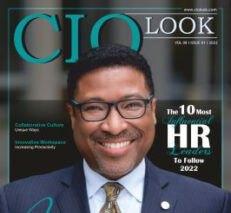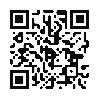

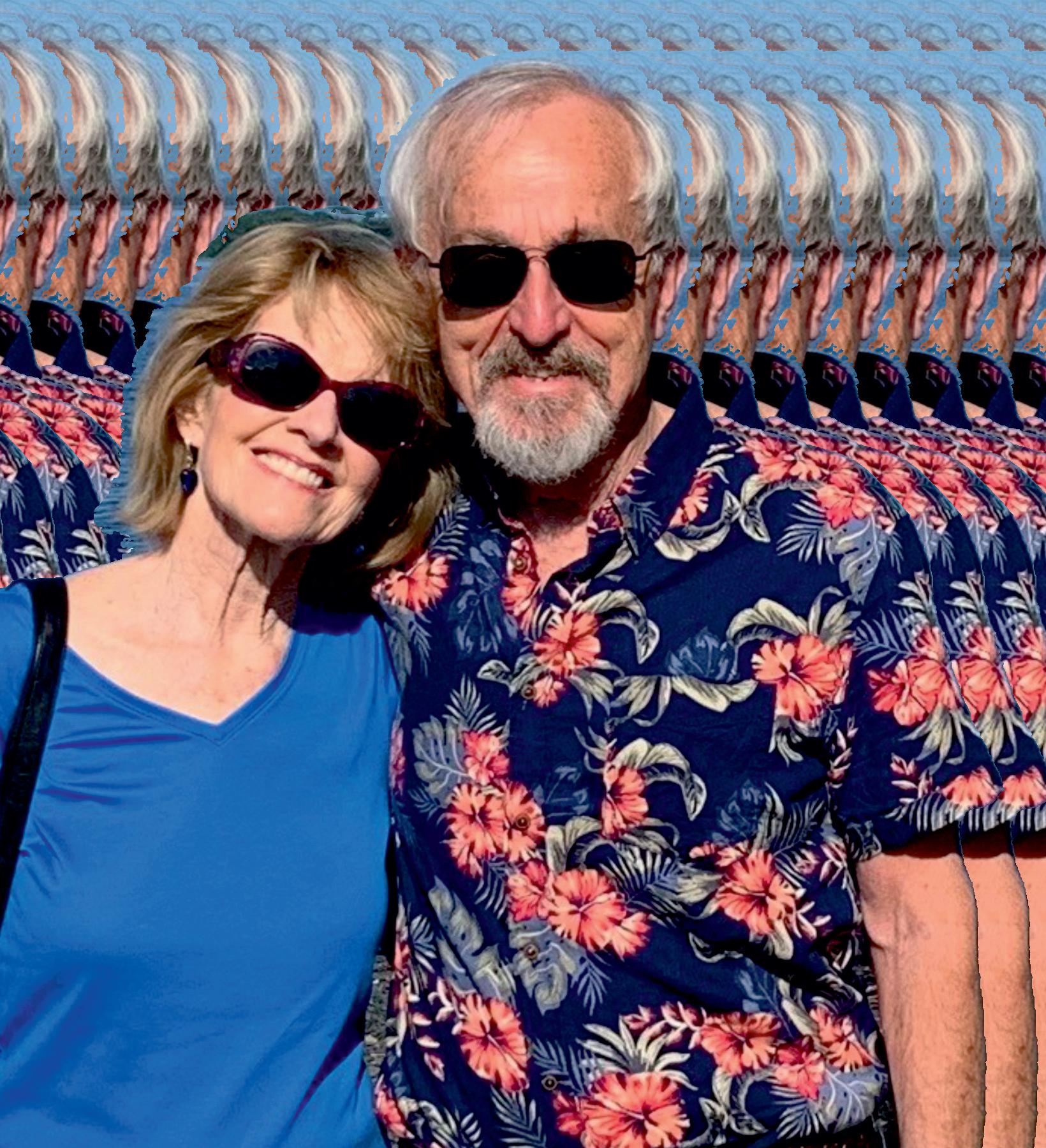
THE UPCOMING EDITION OF REGISTER NOW SCAN THE QR CODE GET FEATURED IN
BECAUSE YOUR STORY DESERVES THE SPOTLIGHT













THE UPCOMING EDITION OF REGISTER NOW SCAN THE QR CODE GET FEATURED IN
BECAUSE YOUR STORY DESERVES THE SPOTLIGHT









In an era characterized by rapid technological advance-
ments, increasing global interconnectedness, and shifting societal demands, education finds itself at a critical juncture. Leading this transformation are visionary educatorswhotranscendconventionalteachingapproachesto redefinehowknowledgeisdelivered,accessed,andapplied. Thesepioneersleverageinnovation,promoteinclusivity,and emphasize practical relevance to prepare learners with the skills and mindset necessary to succeed in a complex and evolving world. Their influence extends beyond the classroom, as they shape educational policy, drive the integration of technology, and advocate for equitable access to high-quality education across diverse communities worldwide. Among these distinguished leaders is Dr. Richard Larson, whose groundbreaking work in education has significantly advanced the field through both innovation andresearch.
CIOLook in its recent edition titled Own the Spotlight: Richard Larson - The Face of America highlights the remarkable contributions of Dr Larson, whose career spans over five decades at the intersection of academic excellence and real-world impact A distinguished professor at the MassachusettsInstituteofTechnology(MIT),Dr.Larsonhas played a pivotal role in redefining the application of operations research and mathematical modeling to solve complexsocietalchallenges.
His groundbreaking work in emergency response optimization most notably the development of the Hypercube Queuing Model—has significantly influenced public safety systemsincitiesaroundtheworld.Inadditiontohisresearch achievements,Dr.Larsonhasmadeenduringcontributionsto education. As the co-founder of MIT BLOSSOMS, he has championed global access to high-quality STEM education throughinnovative,open-sourcelearningplatforms.
Dr.Larson’sleadershipinorganizationslikeINFORMSand the National Academy of Engineering reflects his commitmenttoadvancingthefieldthroughethical,interdisciplinary collaboration.His2023book,ModelThinkingforEveryday Life,bringsanalyticaltoolstoabroaderaudience,reinforcing hisbeliefinthepowerofstructured,mathematicalthinkingto drive meaningful change. Even in retirement, he remains an influential figure, with a career that exemplifies the lasting impact of bridging theory and practice to improve lives worldwide.
Haveagreatreadahead!

-Alaya BrownManaging Editor

https://x.com/CIOLookmedia

https://www.facebook.com/CIOLookMedia/ www.ciolookmedia.com




SIGNATURE


How Dr. Richard Larson USES MODEL-BASED THINKING TO SOLVE COMPLEX EVERYDAY PROBLEMS
18.
Advancing Pedagogy: The Impact of EdTech Influencers on Modern Learning
Comparative Analysis: Global Education Models Shaping the Future

USES MODEL-BASED THINKING TO SOLVE COMPLEX EVERYDAY
“ “
Dr. Larson's career journey began with a single, pivotal invitation—to join MIT under the mentorship of Professor Al Drake.



OwntheSpotlight:RichardLarson-TheFaceofAmerica

Larson Professor MIT


For more than five decades, Dr. Richard Larson has blended academic excellence with a pragmatic drive toimprovetheworld.Asapioneeringprofessoratthe Massachusetts Institute of Technology (MIT), his contributionshaveredefinedhowmathematicalmodelingand operations research apply to real-life scenarios From enhancing emergency response systems to transforming global education through open-source platforms, Dr. Larson has remained steadfast in using model-based thinking to addresspracticalchallenges.Hislegacyismarkednotjustby scholarlypublicationsorprestigioustitles,butbythetangible improvementshisworkhasbroughttopeople'slives.
Dr Larson's career journey began with a single, pivotal invitation—tojoinMITunderthementorshipofProfessorAl Drake. This opportunity sparked what would become a 54yeartenureatoneoftheworld'sleadingresearchinstitutions. ButDr.Larsondidn'tjustteach;hepracticedandextendedthe veryprinciplesheadvocated.Hiscareerhasbeendefinedbya deep belief: that mathematics, when harnessed correctly, is morethanjusttheory—itisatoolforsocietaltransformation. Whether through complex queuing models or innovative educational resources, he has consistently shown how structuredthinkingcanyieldextraordinaryresults.
Even in retirement, Dr. Larson remains a vital force in the academic and professional world.As an advocate for openaccess learning, an active member of the NationalAcademy ofEngineering,andapublishedauthor,hiseffortscontinueto inspire both students and professionals His 2023 book "Model Thinking for Everyday Life" distills decades of wisdomintoaccessiblelessonsthatempowerreaderstomake better choices in their personal and professional lives. Throughallofthis,onetruthremainsclear:Dr.Larson'sstory is not just about solving problems—it's about changing the waywethinkaboutthem.
Since joining the Massachusetts Institute of Technology in 1969,Dr.RichardLarsonhascommittedhimselftoacademic excellence and real-world relevance. Initially inspired by an invitation from Professor Al Drake, his journey at MIT flourished into a long-standing career filled with discovery, mentorship,andinnovation.Dr Larsondidn'tjustacceptthe offer; he transformed it into a platform for impact, making lasting contributions in fields like urban operations, emergencyresponse,andpublicpolicy.
Dr Larson's influence at MITextended beyond lecture halls andtextbooks.Histeachingstyleemphasizedanalytical
“
“ Dr. Richard Larson's career is a testament to the power of structured, modelbased thinking. It's a story of how a brilliant mind chose not just to theorize, but to act—to bring models out of textbooks and into the real world.



““ Even in professional societies, Dr. Larson exemplified his core belief: that good ideas must be shared, tested, and applied.
thinking, problem decomposition, and the use of mathematicaltoolstodrawreal-worldinsights.Hisapproach washolistic,ensuringstudentsnotonlylearnedformulasbut alsounderstoodhowtoapplythemmeaningfully Overtime, he helped build a culture at MIT that emphasized the importanceoftranslatingtheoryintoactionablestrategies—a valuethatwouldshapehisownworkfordecadestocome.
As he advanced in his career, Dr Larson took on multiple leadership roles, including director positions and society presidencies His commitment was not confined to institutional prestige; rather, it was always about advancing knowledge for the public good.Whether through mentoring studentsorleadingresearchinitiatives,hisguidingprinciple remainedthesame:mathematicsandmodelingshouldserve society.

One of Dr Larson's most acclaimed contributions is the HypercubeQueuingModel,amathematicalsystemdesigned to optimize emergency response operations Developed throughhisco-foundedconsultingfirm—initiallyENFORTH Corporation, later Q.E.D.—this model revolutionized how citiesallocatepolice,fire,andemergencymedicalresources. Byleveragingprobability,geography,andsystemdynamics, the model ensures that resources are dispatched more effectively,ultimatelysavinglivesduringcriticalsituations.
This model was not merely an academic exercise. It was implementedinreal-worldenvironments,influencingpublic safety strategies in multiple cities. The improvement in response times directly translated to better outcomes for individuals facing life-threatening emergencies. It's a quintessential example of Dr. Larson's guiding philosophy: that operations research should not stay confined within universities—itshouldenterthestreets,hospitals,andhomes whereitcanmakethemostdifference.
This practical mindset is what sets Dr Larson apart. He understandsthatdataandalgorithmsareonlyasgoodasthe humanconditionstheyserve.Hisgoalhasalwaysbeenabout impact—measurable,visible,andenduring.Forhim,success isn't just a published paper—it's a faster ambulance, a safer neighborhood,orasmartercity
Education, especially science and mathematics, has been another cornerstone of Dr. Larson's legacy. He is the cofounder of MIT BLOSSOMS (Blended Learning Open Source Science or Math Studies), a pioneering open-source initiative aimed at making STEM education accessible to students around the world Launched alongside MIT professorDanFreyandhislatewifeMaryElizabethMurray, theplatformoffershigh-quality,interactivevideolessonsthat arefreelyavailableonline,includingonYouTube.
MIT BLOSSOMS fills a crucial educational gap. In many parts of the world, students lack access to well-designed STEM curricula and qualified teachers BLOSSOMS counters this by offering lessons taught by top experts in a format that encourages classroom discussion and critical thinking. It's not just about learning formulas—it's about learninghowtothink.
This initiative is one of the first large-scale efforts to bring open-accessSTEMeducationtoaglobalaudience.Ithasbeen






“
“ Dr. Larson's influence at MIT extended beyond lecture halls and textbooks. His teaching style emphasized analytical thinking, problem decomposition, and the use of mathematical tools to draw real-world insights.

usedinschoolsacrossAsia,theMiddleEast,Africa,andLatin America. For Dr. Larson, it represents more than just an educational tool; it's a movement toward democratizing knowledge. Through BLOSSOMS, he continues to expand the reach of model-based thinking, empowering students acrosscontinentstosolvelocalandglobalproblemsusingthe languageoflogicandmath.

Dr Larson's influence extends well beyond classroom walls and consulting offices. As president of both the Operations Research Society of America (ORSA) and its successor organization, INFORMS (Institute for Operations Research and Management Sciences), he has been instrumental in shaping the direction of the field. These leadership roles allowed him to push for greater collaboration between academicresearchandindustryapplications.
Through these positions, he encouraged operations researcherstothinkmorebroadlyaboutthesocietalimpacts of their work. He promoted interdisciplinary partnerships, fostered public-private collaborations, and advocated for ethicalconsiderationsinmathematicalmodeling.Hisability to bring people together academics, practitioners, and policymakers ensured that the insights of operations researchcouldbemoreeffectivelytranslatedintopractice.


Even in professional societies, Dr Larson exemplified his core belief: that good ideas must be shared, tested, and applied. His influence in these organizations helped to raise the visibility of operations research, encouraging a new generation to take up the challenge of solving society's toughestproblemsthroughanalyticalthinking.
In 2023, Dr Larson encapsulated his life's work in the book "Model Thinking for Everyday Life", published by INFORMS. The book is designed not for scholars, but for everyday readers people who want to make smarter decisions at home, at work, or in the community. Using approachablelanguageandreal-worldexamples,Dr.Larson introduces readers to the fundamental tools of model-based thinking.
The book covers concepts such as decision trees, queuing theory,optimization,andprobabilisticreasoning—butwitha relatable twist. Readers learn how to apply these models to common challenges, like choosing the best route for a commuteorplanningafamilybudget.Dr.Larson'sgoalisto showthatyoudon'tneedaPhDtothinklikeamodeler—you justneedtherightmindset.
"Model Thinking for Everyday Life" has been praised for its clarity, relevance, and accessibility It's not just a how-to guide—it'sacalltoaction.Dr.Larsonurgesreaderstoadopta morestructuredwayofthinking,notjusttobemorelogical, buttobemoreeffectiveandthoughtfulinhowtheynavigate life'schoices.
Retirement has not slowed Dr Larson's drive to contribute. HeremainsactivewiththeNationalAcademyofEngineering and supports several charitable initiatives. His current focus includes expanding the reach of his latest book to broader platforms such as Barnes & Noble, ensuring that even more people can access the tools and frameworks he has spent a lifetimedeveloping.
Hisongoinginvolvementwithacademia,publicservice,and charitablecauses underscores a commitmentthat transcends personalambition.Dr Larsonseeshisworkaspartofalarger mission to make the world smarter, fairer, and more compassionate through analytical thinking Whether it's through emergency response models, educational videos, or simpleeverydaychoices,hisinfluencecontinuestogrow.
For young professionals and students entering the field of operations research or related disciplines, Dr Larson's story offersinvaluablelessons.Headvisesthemtoremaincurious, embrace interdisciplinary knowledge, and draw on personal experiences. Above all, he urges them to think deeply and modelwisely—becauseawell-constructedmodelcanbethe keytounlockingmeaningful,lastingchange.
Dr Richard Larson's career is a testament to the power of structured,model-basedthinking.It'sastoryofhowabrilliant mind chose not just to theorize, but to act—to bring models outoftextbooksandintotherealworld.Hisworkhastouched lives in countless ways, making cities safer, education more accessible,anddecision-makingmoreinformed.
In an era where the complexity of daily life often feels overwhelming, Dr Larson's message is both timely and timeless:gooddecisionsbeginwithgoodmodels.Andgood models come from a deep understanding of both logic and life.Throughhisresearch,teaching,leadership,andoutreach, Dr.Larsonhasproventhatwhenyoucombinemathematical rigor with a human-centered purpose, you don't just solve problems—youtransformtheworld.






In the rapidly evolving landscape of
education, technology has emerged as both a tool and a catalyst for transformation.Amongthekeydriversofthis changeareEdTechinfluencers—individuals who use their platforms to promote innovativeteachingstrategies,highlightnew technologies,andshapediscourseinthefield of education. With their significant presence across social media, blogs, podcasts, and webinars,theseinfluencersarenolongerjust commentators.Theyareactivelyshapingthe way educators, institutions, and learners engage with education technology, pushing the boundaries of traditional learning paradigms.As modern learning increasingly blends digital tools with pedagogical practices, the influence of these thought leaders cannot be underestimated Their ability to communicate trends, evaluate educational technologies, and connect with diverseeducationalstakeholdersgivesthema uniqueroleinshapingboththeperceptionand implementation of EdTech solutions. By bridging the gap between developers, educators, and students, they offer insights that are not only practical but also rooted in real-world application, making their contributions especially valuable in today’s digitaleducationenvironment.
EdTech influencers play a central role in shaping the narrative around the integration of technology in education Through compelling storytelling and firsthand experience, they present the advantages and challenges of emerging tools in ways that resonate with educators and administrators alike. These influencers often act as early adopters of new platforms and technologies, providing honest feedback that helps refine toolsbeforetheyreachmainstreamuse.Their endorsement or critique can significantly sway public opinion and affect the speed at which new technologies are adoptedbyschoolsandinstitutions.
Moreover,theirpresenceonplatformslikeTwitter(nowX), LinkedIn,YouTube, and Instagram allow them to reach vast audiences in real time. They create accessible content that simplifiescomplextechnologiesandmakesthemrelatablefor educatorswhomayfeeloverwhelmedbythepaceofchange. Asaresult,teachersaremorelikelytoexplorenewtoolsafter seeing them successfully demonstrated or discussed by someonetheytrust.Thepowerofpeerinfluence,amplifiedby social media, accelerates the adoption process and encouragesinnovationintheclassroomatagrassrootslevel.
AnothersignificantimpactofEdTechinfluencersliesintheir contribution to professional development Traditional professional development methods often fall short in addressing the rapid technological changes taking place in education. Influencers, however, provide continuous, up-todateresourcesintheformofwebinars,onlinecourses,how-to videos, and blog posts. These resources often align more closelywiththeday-to-dayneedsofeducators,makingthem highlypracticalandimmediatelyapplicableintheclassroom. Byofferingtargetedinsightsandpracticalstrategies,EdTech influencershelpeducatorsstayaheadofthecurve.
In addition to resource sharing, these influencers foster vibrant communities of practice where educators from different regions and backgrounds can connect, collaborate, and learn from one another Hashtag movements, virtual conferences, and discussion forums driven by EdTech influencers allow for the free exchange of ideas, success stories, and lessons learned. This networked collaboration breaksdowngeographicandinstitutionalbarriers,creatinga global conversation around best practices in educational technology The result is a more inclusive and dynamic professional learning environment where continuous improvementisbothencouragedandsupported.
Beyond influencing educators and institutions, EdTech influencers also have an indirect but powerful impact on student learning and engagement When teachers adopt technology with confidence and creativity — often inspired by influencer-led guidance — students benefit from more interactiveandpersonalizedlearningexperiences.Toolssuch as gamification apps, collaborative platforms, and digital assessment tools become part of a dynamic learning environment that supports diverse learning styles and promotesdeeperunderstanding.
Additionally, as the future of work becomes increasingly technology-driven, students must develop digital literacy, critical thinking, and adaptability EdTech influencers contribute to this preparation by spotlighting tools and strategiesthatnotonlyteachacademiccontentbutalsofoster essential 21st-century skills Their emphasis on learner agency, innovation, and equity ensures that technology is used not just for efficiency but for meaningful learning. In doing so, they help cultivate classrooms where students are not only consumers of information but also creators and problem-solvers prepared for the challenges of the modern world.
TheriseofEdTechinfluencersmarksapivotaldevelopment in the ongoing evolution of modern learning and digital educationtransformation.Theirabilitytoinfluencedecisionmaking, enrich professional development, shape curriculum conversations,andinspireclassroominnovationmakesthem integral to the broader educational ecosystem These individuals not only spotlight cutting-edge tools but also translate them into practical strategies educators can confidently apply. As schools, institutions, and educators navigate the increasing complexities of integrating technology into both traditional and online teaching environments, the insights, guidance, and leadership of EdTech influencers will continue to play a critical role in shapingthefutureofeducation.





In an increasingly interconnected world, education systems are undergoing profound transformations to meet the evolving needs of society The traditional boundariesthatoncedefinednationaleducationframeworks are dissolving as countries adopt innovative practices from one another. Global education models are now focused on preparinglearnersnotjusttoabsorbinformationbuttoapply knowledge critically, solve complex problems, and collaborate effectively in a dynamic global environment. These evolving education paradigms prioritize adaptability, the integration of advanced technology, and the fostering of inclusivity and emotional intelligence. Understanding these emerging trends is essential for educators and policymakers committedtodesigninglearningsystemsthatequipstudents tothriveinthe21stcenturyandbeyond.Theglobalizationof knowledgeandthewidespreadsharingofbestpracticeshave led to an educational landscape characterized by exchange and adaptation. Rather than following a one-size-fits-all approach, education systems worldwide are embracing diverse methodologies tailored to meet local needs while drawinginspirationfromsuccessfulglobalinnovations.
One of the most significant trends influencing global education is the shift toward competency-based education. This model challenges the traditional notion of measuring studentprogressbytheamountoftimespentintheclassroom ortheabilitytomemorizeinformation.Instead,itcenterson ensuring that learners achieve mastery of specific skills and competenciesbeforeadvancing.Thisapproachoffersamore personalizedlearningexperience,allowingstudentstomove forward only when they demonstrate a thorough understanding of the subject matter Competency-based education is especially beneficial in diverse educational settings where students vary widely in their learning styles and paces. By focusing on outcomes rather than time, it accommodates individual differences, reducing the pressure associatedwithuniformprogression.
Furthermore, this model better aligns with the demands of contemporary economies, which increasingly require workers who possess practical, real-world skills and the abilitytoadapttonewchallenges.
Employers seek graduates who can think critically, solve problems, and work collaboratively—competencies that are central to this educational approach. Countries adopting competency-basedframeworkshavealsointroducedongoing assessments and feedback mechanisms, fostering a growth mindset that encourages students to take responsibility for their learning and embrace challenges as opportunities for development.
Technology is a driving force behind many of the advancementsinglobaleducation.Ithasrevolutionizedhow teachers deliver content and how students engage with learning materials Education models worldwide are increasinglyintegratingdigitaltoolstoenhanceaccessibility, flexibility, and personalization in learning. From interactive online platforms and digital textbooks to virtual classrooms and artificial intelligence-powered tutoring systems, technologyisexpandingthereachandqualityofeducation.
Digital learning allows students to access resources regardlessoftheirlocation,helpingtobridgegapscreatedby socioeconomic disparities or geographic isolation. The COVID-19 pandemic accelerated this trend, forcing educationsystemstoadoptremotelearningsolutionsrapidly. As a result, the adoption of technology has shifted from a supplementalroletoacentralcomponentofeducationmodels globally Beyond accessibility, technology facilitates adaptivelearning,whereAIalgorithmstailorcontenttomeet individualstudentneeds,makinglearningmoreefficientand engaging. It also supports collaborative projects and international exchanges, encouraging students to develop globalawarenessandcross-culturalcommunicationskills.
In addition to focusing on academic achievement and technological innovation, modern education models are increasinglyprioritizingsocial-emotionallearning(SEL)and inclusivity. SELprograms cultivate essential life skills such as emotional regulation, empathy, interpersonal communication, and responsible decision-making These skillsarecriticalforpersonalwell-beingandsuccessinboth professional and social settings. Recognizing the impact of emotionalintelligenceonacademicperformanceandoverall development,manyeducationsystemsnowembedSELinto theircurriculaasafundamentalcomponent.
Inclusivityineducationisanothervitalaspectshapingfuture models.Thereisagrowingcommitmentworldwidetocreate learning environments that accommodate diverse learners, includingstudentswithdisabilities,thosefrommarginalized communities, and non-native language speakers. Inclusive educationpracticesensurethatallstudentsreceiveequitable opportunities to succeed, regardless of their backgrounds or abilities. This focus on inclusivity extends beyond physical access to education; it emphasizes creating supportive environments where every learner feels respected, valued, and encouraged By fostering empathy and social responsibility among students, education systems contribute tobuildingmoreequitableandcohesivesocieties.
Thefutureofeducationisbeingshapedbyinnovativeglobal models that prioritize competency, technology, socialemotionallearning,andinclusivity Thesemodelsrespondto the realities of a fast-changing world, where the ability to thinkcritically,adaptquickly,andcollaborateacrosscultures is essential By moving beyond traditional methods, education systems are creating more flexible, personalized, and equitable learning environments. The incorporation of competency-based education ensures students master necessaryskillsattheirownpace,whiletechnologyexpands access and tailors learning experiences to individual needs. Meanwhile, the growing emphasis on social-emotional learning and inclusivity helps cultivate compassionate, sociallyresponsiblecitizenspreparedtoengagemeaningfully with their communities. As countries continue to exchange ideasandadoptbestpractices,theglobaleducationlandscape will become more interconnected and responsive to diverse needs. This evolution promises to prepare learners not only for the workforce of tomorrow but also for the broader challenges and opportunities of an increasingly complex globalsociety



